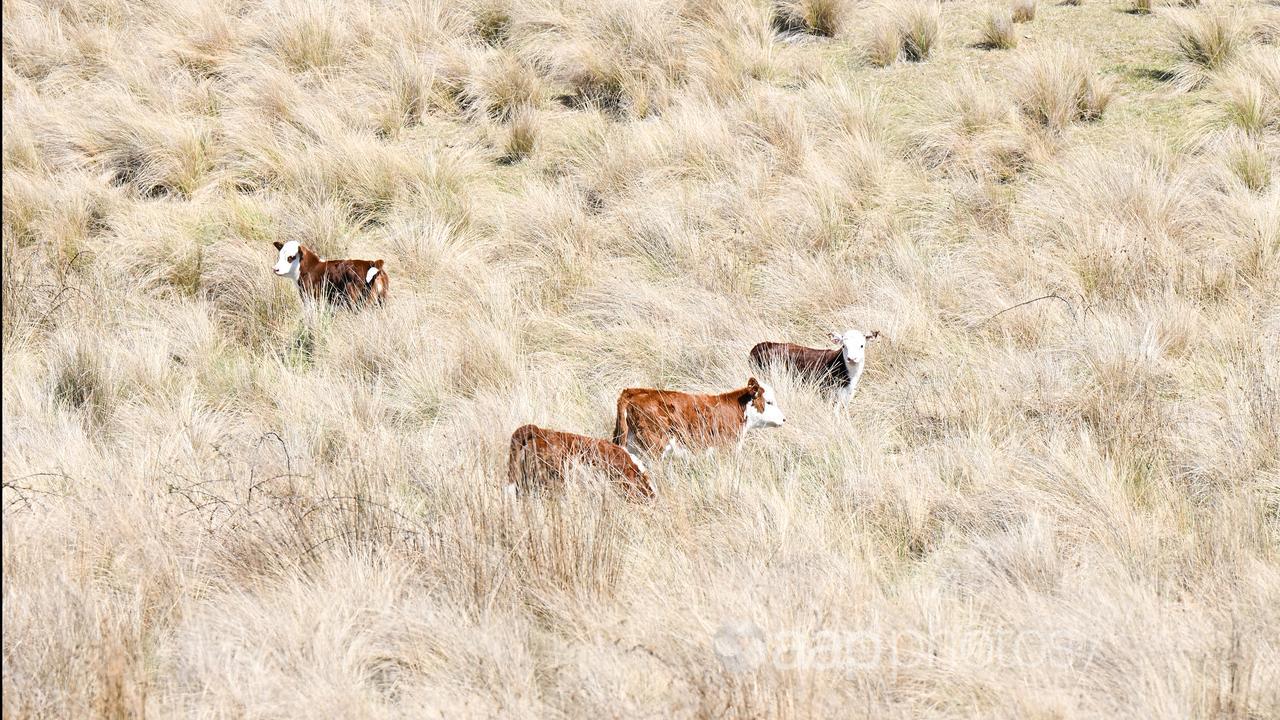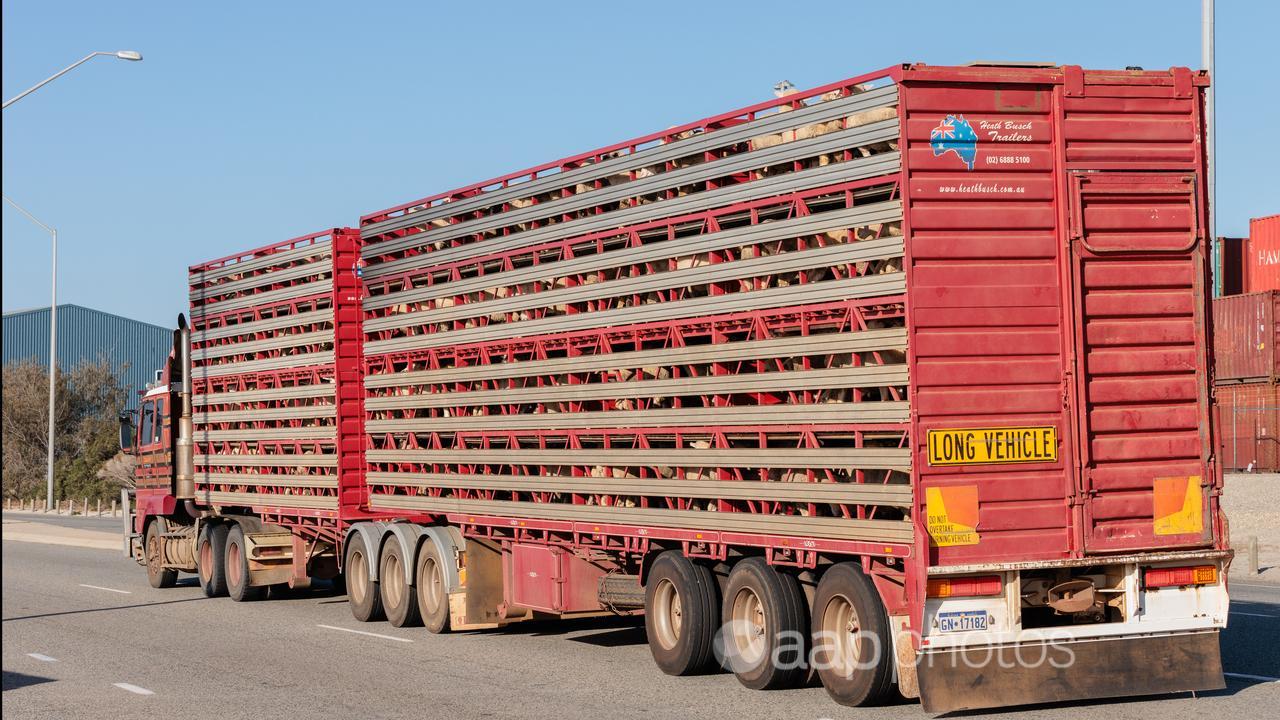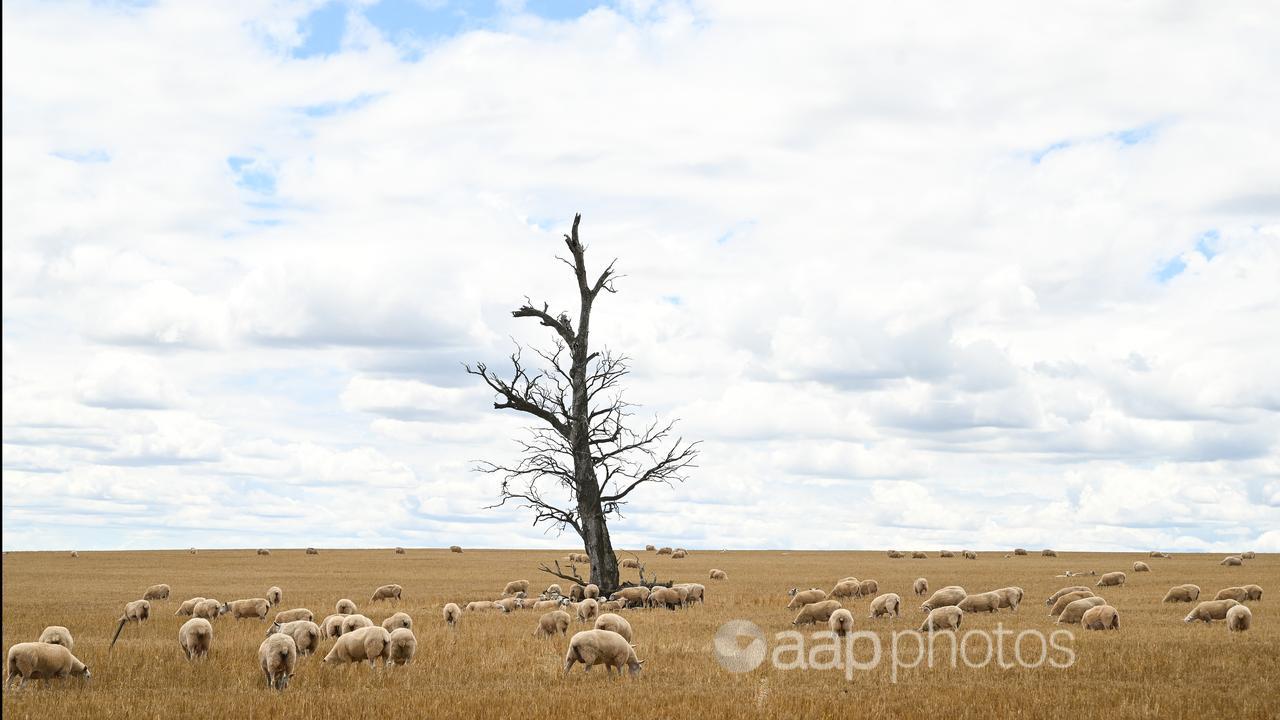Record-breaking drought conditions, soaring feed costs and plummeting confidence in the livestock export industry could be the “nail in the coffin” for many Western Australian farmers.
Large parts of the state’s fertile southwest have recorded their lowest rainfall in more than 50 years over the past eight months, depleting dams and ground feed at a time when grain and fodder supplies were already down.
WA Farmers livestock president Geoff Pearson says the situation is “critical”.
“There’s no rain on the horizon for the next six to eight weeks of any substance, which is going to cause some reasonable issues,” he told AAP.
“We’ve been caught out … and it’s putting a lot of pressure on us.”

Some livestock producers “have pushed the button” and are de-stocking their properties amid soaring feed costs.
But livestock prices have fallen by up to 75 per cent compared to previous years.
Mr Pearson said uncertainty about the future of live exports had reduced demand for WA cattle and sheep, leading to lower farmgate prices as fewer animals were sent overseas.
“There’s no real confidence left in the industry and what we’re finding is these exporters are looking to other countries to source product,” he said.
“Every farm that’s got livestock at the moment would be under some sort of pressure of feed, water and lack of ability to market.”
The lack of certainty about the future and the drought is impacting the willingness of some producers to continue investing in their farms.
“We can keep our livestock alive (during the drought), we can keep investing but what’s the outcome?” Mr Pearson said.
“This could be the nail in the coffin for some producers.”

The WA government on Friday announced $8.6 million to support farmers, with $2 million in hardship grants and $4 million in interest-free loans for those impacted by drought.
A further $1.5 million has been promised to bolster community water infrastructure, with $875,000 for mental health and community wellbeing programs and $225,000 for rural assistance charities.
Primary producers can apply for short-term loans up to $25,000 per business to cover the cost of stock feed, water and transportation.
The funds can also be used to buy feed silos and water tanks and improve irrigation systems to build drought resilience.
Agriculture and Food Minister Jackie Jarvis has asked her federal counterpart Murray Watt to extend the live export trade period until June 24 in a bid to help producers sell their stock.
“We know the current dry conditions mean rural communities across the state are struggling,” she said.
Mr Pearson welcomed the funding but said it may not be enough to make a difference.
“Whether or not the funds will go far enough, given the high impact of the statewide want for fodder and water, that’s the critical bit,” he said.

The Department of Agriculture, Fisheries and Forestry said the significant fall in livestock sale yard prices was driven by a large increase in supply and a fall in demand.
It said the “sudden” shift to drier seasonal conditions following consecutive La Niña years had contributed to the increase in supply.
“The subsequent lower availability of pasture to feed animals has increased the relative cost for farmers to hold their cattle and sheep, thereby increasing their incentive to turn-off livestock,” a spokesman said.
The department also said meat processing facilities hadn’t been able to expand their operations quickly enough to absorb the additional supply.




















